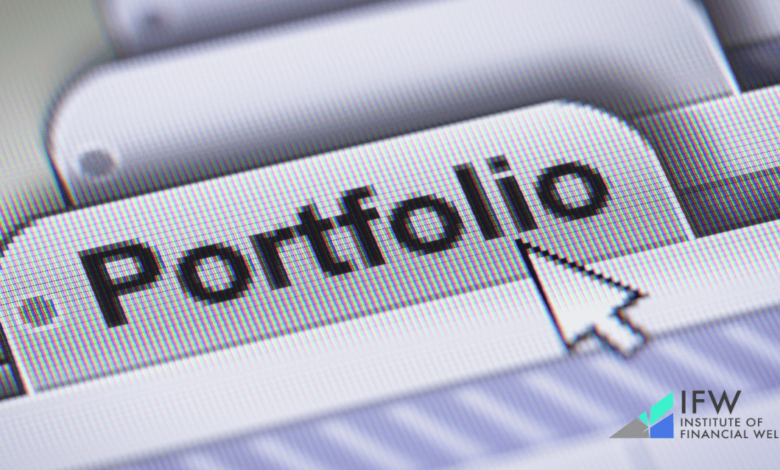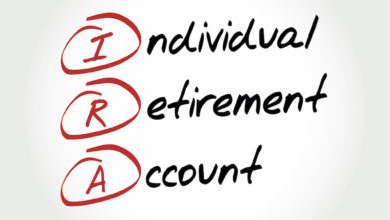How to Diversify Your Retirement Portfolio

How to Diversify Your Retirement Portfolio
The old saying goes “Don’t put all your eggs in one basket”. Well portfolio diversification is the investment strategy version of that quote.
Sure we’ve all heard retirement planners discuss the importance of portfolio diversification. It’s always a topic of discussion on retirement planning webinars and listed as one of the most basic and vital parts of any investing strategy in countless books and videos.
And it’s all correct. By understanding how to diversify your portfolio, you can take control of your financial future and protect yourself from market volatility. Get ready to learn how to equip yourself with the essential information needed when it comes to asset classes, investment vehicles, and building a diversified retirement portfolio that aligns with all of your goals.
Key Takeaways
- Portfolio diversification is an investment strategy that spreads investments out through various asset classes, sectors, and geographies to reduce risk & maximize returns.
- Building an effective portfolio requires the allocation of stocks, bonds, cash equivalents & alternative investments tailored to individual financial goals and risk tolerance.
- Monitoring and periodic rebalancing are essential for preserving desired asset allocation while avoiding over-diversification.
Understanding the Basics of Portfolio Diversification
“What’s comfortable is not the right way to invest. You must own things that you’re uncomfortable with. Otherwise you’re not really diversified.” – Peter Bernstein.
Portfolio diversification is a crucial part of risk management. Essentially it means investing in various asset classes, industries, and regions to reduce portfolio hazards while potentially increasing returns. Such a varied investment approach guards against market unpredictability while providing growth opportunities across different economies.
Let’s explore how to construct an all-encompassing portfolio with assets from numerous categories, such as equity holdings, fixed-income securities or commodities, etc., that will help minimize risks yet offer great rewards at the same time!
What is portfolio diversification?
Diversification is an important tactic that involves spreading investments across different asset classes, industries, and regions. To reduce the overall risk of your investment portfolio, you have to diversify.
Through proper diversification, there may be less concentration in one area as well as more growth potential offered from other sectors.
Having a balanced portfolio shields against unforeseen market fluctuations. Sure one sector can take a hit, but others may boom, giving you the breathing room to continue to live an active, and happy retirement lifestyle.
Be sure your investments remain varied!
Why diversify your investments?
Unless you have a crystal ball or a long and impressive history as an investor, you will have to plan against market fluctuations.
Creating a portfolio composed of various assets can potentially enhance long-term returns, as well as diminish the fluctuations caused by market risk.
For instance, when one sector underperforms (technology), others (such as healthcare or consumer staples) might outperform and soften its effects.
How to diversify your portfolio
You can either spend a lot of time researching industries, securities, sectors, and asset classes to create a well balanced and diversified investment portfolio, or you can have a professional create a customized retirement roadmap for you.
If you want to learn how to do this yourself, then read on!
Building a Diversified Portfolio: Key Asset Classes

Picture yourself at a high-stakes poker table. Each hand you’re dealt represents an investment choice, and just as a savvy poker player never relies on a single hand to win the game. Wise investors know not to bet all their chips on one hand.
In the unpredictable world of investing, diversifying your portfolio is akin to mastering various poker strategies to stay ahead, no matter the cards you’re dealt.
A diversified investment portfolio will include a variety of asset classes, like stocks, bonds, cash, and alternative investments.
Stock and bonds make up two essential components when investing in this way; both provide distinct advantages but differ significantly in yield history within given markets.
Finally, be mindful that creating such diverse portfolios has risks, too, due to practicalities associated with investing multiple sources at once, such as choosing the wrong funds, etc. To use our poker analogy, you don’t want to bet every single hand all the time, yes you want to diversify, but do not overdo it.
Stocks
The stock market offers many diverse options like various industry sectors, capitalizations (large-, mid-, small-cap), and emerging markets for maximizing opportunities while minimizing risk through diversification across them all.
Investing in a mutual fund or ETF is the easiest way (and some would say the safest way) to diversify your investment portfolio.
With just one purchase, you can gain exposure to a broad range of assets. A single ETF or mutual fund can hold hundreds, sometimes even thousands, of individual stocks, bonds, or other securities. It’s the single-click way to get the outcome you desire and is best for those new to investing.
Bonds
When constructing a well-diversified portfolio, fixed-income securities such as bonds and bond funds are important components to consider. You essentially lend money to governments or corporations with an agreement for regular interest payments along with the return of your initial capital investment at maturity.
A common idea is to ensure that the percentage of bonds in your portfolio is close to your age. So if you are 65 years old, then your portfolio should have 65% bonds or close to it. This is not necessarily the best option for everyone, but it can be a good rule of thumb for those who do not have the time or experience to learn more about investing.
Although there is usually less reward than stock market investments carry, the risk factor will be much lower. For even more diversification when it comes to debt holdings, look into governmental, corporate, and municipal bonds, too.
Cash and Cash Equivalents
Consider cash equivalents such as savings accounts, money market funds, or short-term CDs. This type of investment offers more stability when the markets are volatile yet presents lower returns than stocks and bonds do.
Keeping some part of your portfolio available in liquid form like this allows you to have access quickly if needed while still providing security at all times.
Alternative Investments
These types of investments tend to have varied risk-return characteristics. Investment risks associated with alternative investing should be considered before proceeding. In the process, seeking professional advice is highly recommended if needed.
Diversifying Within Asset Classes

All your eggs in the same coop but not the same basket.
By spreading investments across multiple sectors, market capitalizations, and geographical locations, you create a more resilient portfolio that is better suited for long-term growth no matter how much fluctuation occurs in any given market. Here are some strategies for diversifying your assets within an individual asset class:
Sector and Industry Diversification
Allocating your investments among various companies coming from distinct areas of the economy can minimize negative events or occurrences that could happen only to one industry. For example, having a mix of technology-focused businesses plus those related to health care will help balance the risks involved when exclusively investing in a single sector.
Remember to regularly assess how much you are invested in each field so that your portfolio composition always remains consistent with what you want it to achieve financially.
Market Capitalization
Your portfolio should be composed of different market capitalization categories, such as large-cap, mid-cap, and small- cap stocks, to ensure an appropriate balance between risk exposure and the return potential.
Regularly evaluating your diversified portfolio’s market capitalization levels about current conditions can help you reap maximum rewards while managing any associated risks.
Geographic Diversification
Don’t forget to look overseas for more opportunities. International investments may provide greater diversity as these markets can fluctuate differently than their local counterparts during changing conditions.
Utilizing Investment Diversification

Mutual funds, ETFs (Exchange Traded Funds), index funds, and robo-advisors all have specific benefits that should be considered when building a well-rounded retirement plan according to one’s risk tolerance.
Each of these choices offers distinct advantages and drawbacks that need to be taken into account for an investor to create a diversified portfolio best suited for them.
Mutual Funds and ETFs

These investments have relatively low costs, they are attractive options for many people looking to spread out risk without having large expenses.
Benefits of Mutual Funds:
- Diversification: One mutual fund can hold securities from a range of companies, sectors, or asset classes, spreading risk.
- Professional Management: Fund managers and research teams make investment decisions based on extensive analysis.
- Liquidity: Mutual fund shares can be bought or redeemed on any business day at the fund’s current net asset value (NAV).
- Affordability: Many mutual funds have relatively low minimum investment requirements.
- Variety: There are numerous types of mutual funds catering to various investment objectives – from equities to fixed income, from sector-specific to thematic funds.
- Dividend Reinvestment: Investors can opt to reinvest dividends to purchase additional shares.
- Automatic Investment and Withdrawal: Many funds offer options for systematic investment plans (SIP) or systematic withdrawal plans (SWP).
Benefits of ETFs:
- Diversification: Like mutual funds, ETFs offer a diversified basket of assets.
- Liquidity: ETFs are traded on stock exchanges like individual stocks, allowing buying/selling throughout the trading day.
- Tax Efficiency: The structure of most ETFs helps avoid triggering capital gains taxes when securities within the fund are traded.
- Transparency: ETFs disclose their holdings daily, whereas mutual funds typically do so quarterly.
- Lower Costs: Generally, ETFs have lower expense ratios than actively managed mutual funds.
- Flexibility: They can be bought or sold at market prices any time the market is open, and can also be used in advanced trading strategies (like short selling).
- Dividend Payment: Dividends from the underlying assets are usually paid directly to ETF shareholders.
Cost ratios vary, so investors need to be mindful when choosing which instrument best suits them, given their goals or level of tolerance for volatility.
Index Funds
Index funds are a great choice for long-term investors who desire cost savings and efficient diversification in their portfolios.
- Cost-Effective: Since index funds passively track a specific index, they usually have lower expense ratios compared to actively managed funds. This can result in significant savings over time.
- Diversification: Index funds provide exposure to a wide array of stocks or bonds within a particular index. This broad diversification helps mitigate the risk associated with individual securities.
- Transparent: The composition of an index fund is clear since it seeks to replicate a known market index. Investors can easily determine which assets the fund holds at any given time.
- Tax Efficiency: The passive nature of index funds generally leads to fewer transactions compared to active funds. Fewer trades can mean fewer capital gain distributions, which may result in a tax advantage for investors in taxable accounts.
- Performance: Over time, many actively managed funds struggle to consistently outperform their benchmark indexes after fees. Thus, by closely mirroring the performance of the index, index funds often outpace the post-fee performance of active funds.
- Simplicity: For investors seeking a straightforward investment strategy, index funds provide an easy way to gain market exposure without the need to analyze individual securities.
- Liquidity: Like other mutual funds, shares of index funds can be purchased or redeemed at the fund’s current net asset value (NAV) at the end of each trading day.
- Low Turnover: Index funds generally have lower turnover (i.e., buying and selling of assets within the fund) than active funds, which can lead to lower transaction costs.
- Automatic Rebalancing: As the market values of securities in the underlying index change, the index fund adjusts its holdings accordingly, ensuring it remains aligned with the index.
With an array of index fund options available that cater to your risk tolerance, you can find one that suits your needs best while being more passive yet potentially profitable than other financial vehicles.
Robo-Advisors
Robo-advisors provide a hassle-free way for investors to manage diversified portfolios that are tailored according to their specific risk tolerance and objectives. With lower fees than traditional advisors, these automated investment systems can help save on costs while keeping focus on the long term. It is important, though, to evaluate the strategy and track record of your robo-advisor to confirm it satisfies both financial goals as well as the level of risk required by you.
Monitoring and Rebalancing Your Diversified Portfolio

It is essential to continually review and adjust a diversified portfolio to retain the desired asset allocation and level of risk. Through monitoring your investments regularly, you can guarantee that they remain in line with both financial goals and individual tolerance for danger. Rebalancing permits one take advantage of potential market opportunities while averting an excessive investment into any particular area.
To sum up, examining portfolios regularly when balancing assets aids long-term security whilst also providing growth prospects for investors’ money within their chosen parameters of risk management strategy along with objectives regarding finances.
Periodic Rebalancing
Periodically rebalancing your portfolio is a method for staying true to the asset allocation you initially chose, as well as ensuring that any one investment isn’t exposed too much. This usually includes selling investments that have gone up in value and buying those that are lower so they follow your target balance again.
This kind of monitoring keeps things in line with both what you want financially and how much risk tolerance you’re comfortable with. Helping ensure retirement goals are within reach.
Avoiding Over-Diversification
Investors must diversify their portfolios to maximize returns, yet caution should be taken so as not to engage in over-diversification, which can lead the portfolio astray and hinder effective management. To ensure that this does not occur, careful consideration must be given when selecting assets while also limiting them to a reasonable amount rather than an excessive quantity of investments with similar performances. Evaluating your investments regularly helps maintain a balanced collection aligned both with financial objectives and risk tolerance levels.
The Institute of Financial Wellness
The Institute of Financial Wellness is dedicated to giving individuals and families the knowledge, resources, and aid they need to reach financial security. With an emphasis on diversifying their investments for them to realize success during retirement years, IFW encourages everyone from any background or situation to take steps towards obtaining optimal fiscal stability.
One crucial element that contributes immensely when looking into budgeting long term is ways one can avoid risks associated with having all your eggs in one basket – opting instead for a more diverse portfolio, as this grants an individual greater safety against market volatility. We’re here, ready to provide advice so you can feel confident that your finances have been examined holistically!
Full Summary
By understanding the necessity for diversification and implementing a balanced investment approach across different asset classes, market capitalizations, industries, and geographic locations, you can create a resilient portfolio to reach your financial ambitions while safeguarding it from market volatility. A well-rounded retirement portfolio enables an individual to take charge of their future prospects with careful monitoring as well as occasional rebalancing to fulfill long-term monetary objectives based on personal risk tolerance.
Frequently Asked Questions
What is a good retirement portfolio?
For a successful retirement portfolio, it is important to combine stocks, bonds, and cash investments with higher-yielding mutual funds and index funds. This balanced mix should ensure that you generate regular income while maintaining the value of your money: 60% in stock-related products such as equities or ETFs, 35% in fixed returns options like treasury bills or certificates of deposits, and 5% allocated for convenient liquid assets.
What is the 3% rule in retirement?
To ensure financial balance in the long term during retirement, a 3% rule is recommended. This rate should be adjusted according to inflation and other market conditions each year; this percentage would equal an initial withdrawal from your portfolio value per annum.
What are diversified investments?
Creating diversified investments involves investing in a mix of stocks, bonds, and other asset classes across multiple companies and industries. Rebalancing is the act of actively managing this portfolio to maximize returns while minimizing risk by frequently resetting allocations between these assets accordingly.
What are the key asset classes for a diversified portfolio?
A diversified portfolio should include stocks, bonds, and cash as its major asset classes, along with alternative investments.
How can mutual funds and ETFs assist with diversification?
Investing in mutual funds and ETFs can provide asset class diversification, as they contain different stocks, bonds, or other securities, which may help to reduce risk while helping investors work towards their financial objectives.
After 18 years as President and Founder of TheaterMania and OvationTix, Darren is excited to be on a new journey as the President and Co-Founder of The Institute of Financial Wellness. (The IFW)
For consumers, The IFW provides financial education, resources, and services that help people live their best life.
For Financial Professionals, The IFW provides proven sales and marketing systems, state-of-the-art technology, training, and support to financial professionals nationwide. The IFW helps financial professionals grow their practices to the next level! IFW Certified Financial Professionals are an elite group of professionals that, together with the IFW, help people succeed financially and live their best lives.






